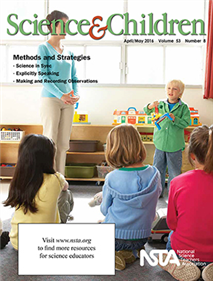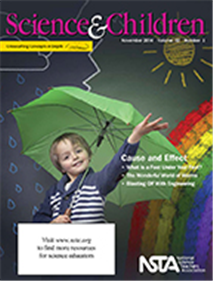All Physics resources
Blog Post
At the core of a Next Generation Science Standards (NGSS) classroom is the sequence of exposing students to an interesting natural phenomenon, having students generate questions about the phenomenon, investigating student questions, then creating a s...
By Cindy Workosky
Blog Post
Digging Deeper: Designing Solutions
This month’s Digging Deeper column for the Next Gen Navigator focuses on the practice of constructing explanations and designing solutions, and specifically the design process that addresses the engineering component of the Next Generation Science ...
By Cindy Workosky
Journal Article
Editor's Note: Teaching Energy Is Compelling
Science and Children’s editor shares thoughts regarding the current issue....
Journal Article
Science 101: What, Exactly, Is the Heisenberg Uncertainty Principle?
This column provides background science information for elementary teachers. This month’s issue discusses the Heisenberg uncertainty principle....
Journal Article
Safer Science: Heightened Risks
This column provides best safety practices for the science classroom and laboratory. This month’s issue discusses how to work safely when using elevated and potentially dangerous locations....
Journal Article
Science 101: How Does Stable Equilibrium Differ From Other Kinds of Equilibrium?
This column provides background science information for elementary teachers. This month’s issue discusses the different types of equilibrium....
Journal Article
The Early Years: Cause and Effect: Where's the Evidence?
This column discusses resources and science topics related to students in grades preK to 2. This month’s issue addresses the crosscutting concept of cause and effect as the column editor views it from her work with children ages 2–8....
NSTA Press Book
Using Physical Science Gadgets and Gizmos, Grades 6-8: Phenomenon-Based Learning
What student—or teacher—can resist the chance to experiment with Rocket Launchers, Sound Pipes, Drinking Birds, Dropper Poppers, and more? The 35 experiments in Using Physical Science Gadgets and Gizmos, Grades 6–8, cover topics including press...
By Matthew Bobrowsky, Mikko Korhonen, Jukka Kohtamäki







